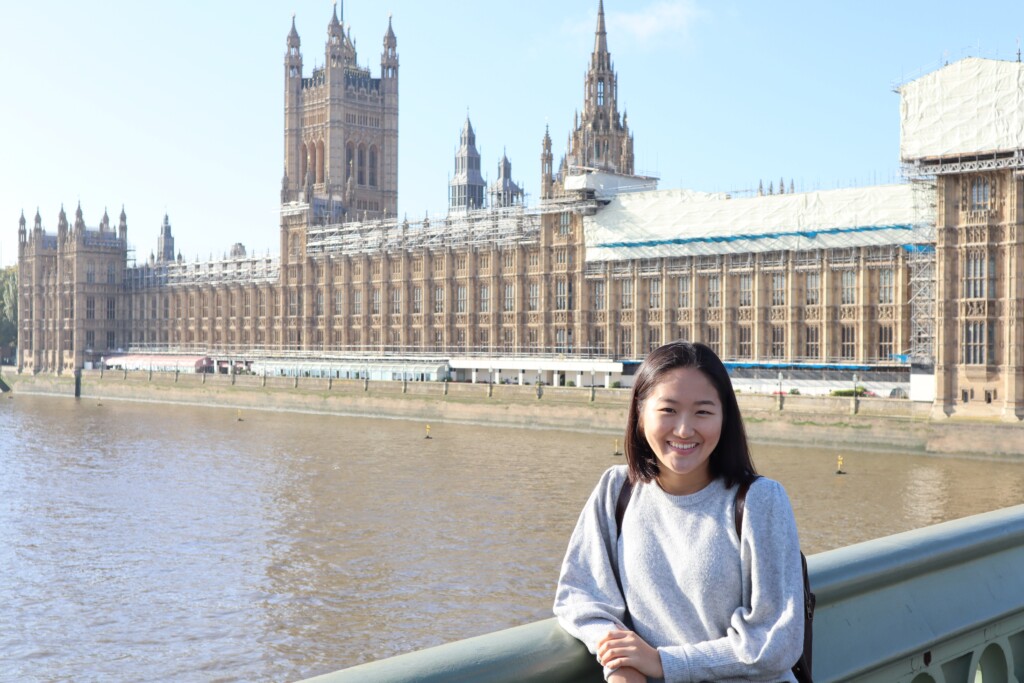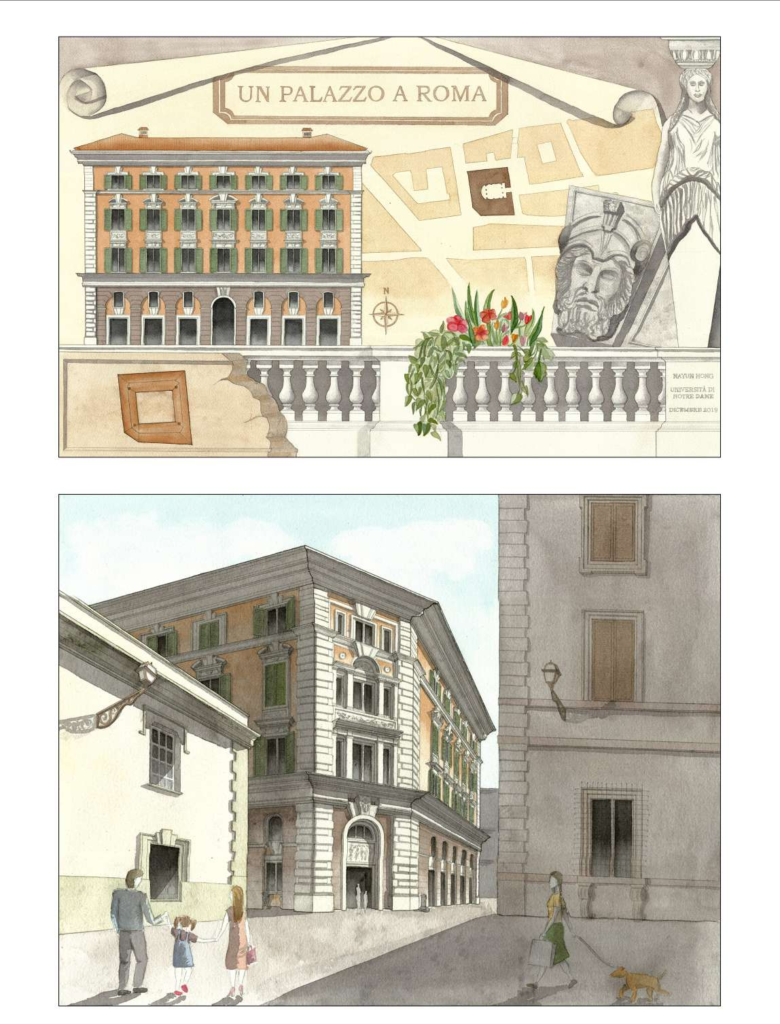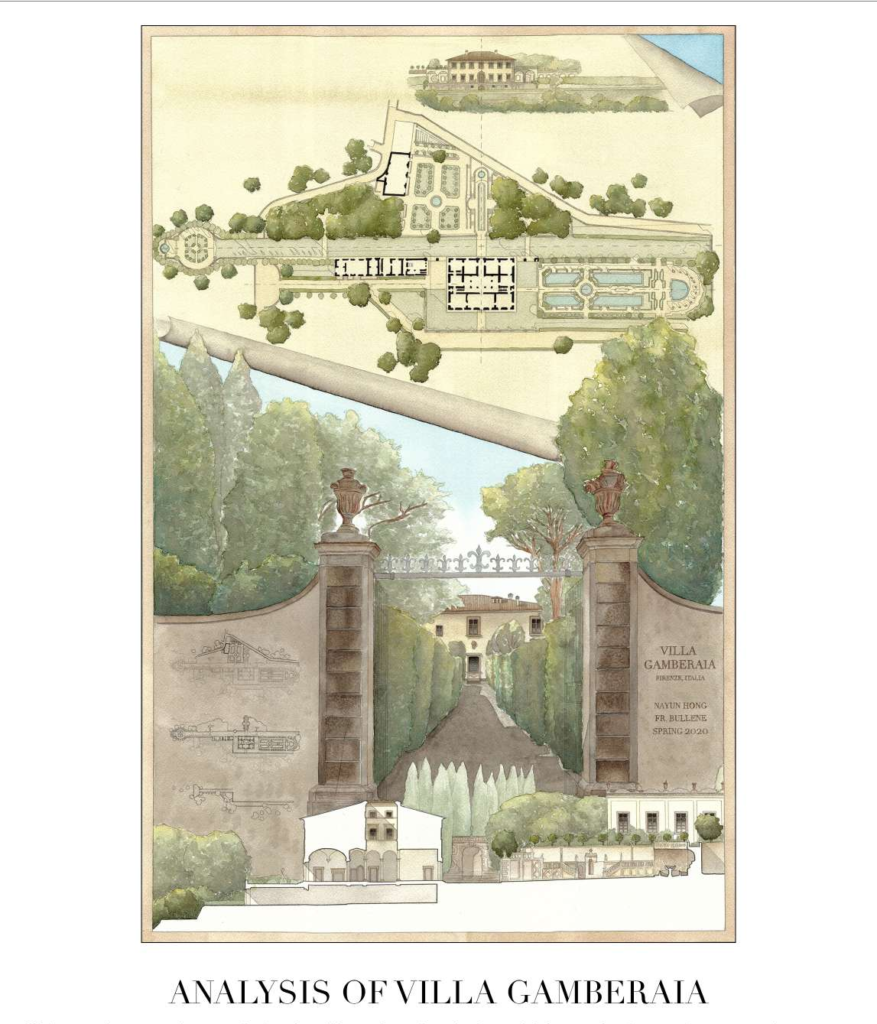
Sometimes things are just meant to be! For sometime, HHF has been actively seeking to initiate meaningful opportunities and experiences for young people, especially in the area of internships. Our goal: to educate youth (specifically high school and college level students) about historic preservation practices, introduce them to significant historic sites and share the diversity of potential careers in the field. We received special grant funding and were on track to develop a full summer internship for winter and/or summer of 2021–then the pandemic hit. As we were thinking about how best to move forward, I received a very interesting email from a young woman named Nayun Hong.
I am a third-year architecture student at the University of Notre Dame
I had the wonderful opportunity to study abroad in Rome, Italy, focusing on the study of classical architecture and history until my program was suspended due to the COVID-19 outbreak. Fortunately, I was able to return home to Honolulu before Italy began their lockdown. From the seven months I spent in Europe, I saw, sketched, and learned about the architecture of different regions and cities. I was captivated by the organic beauty of so many historic buildings and this cultivated my interest in the preservation of historic architecture. After graduation, I would like to become an architect that not only designs new projects, but also works to restore and preserve the elegance of existing structures.
The featured projects in my portfolio were hand-drafted with some initial work on Adobe Photoshop, AutoCAD, and Google SketchUp.
“What an amazing coincidence,” I thought and was impressed with the examples she shared of her hand-drafted renderings from her studies in Europe. Here are a few of them.
Nayun grew up on O‘ahu and was seeking a summer internship during uncertain times, eager to learn more about Hawai‘i’s architecture and hone her technical drafting skills. After ruminating over our limited capacity to administer a program due to Covid-19 restrictions and the shortened time frame to prepare and execute a full internship (Nayun’s summer window was limited to 5 weeks and her start date was approaching rapidly), we assembled an outline for a self-directed independent study and jumped in.
Our objective was to provide Nayun direction and a list of resources that presented an eagle eye view of historic preservation and its many facets: what is it; how did it gain momentum in the U.S.; what laws, protocols and structures support it; what are best practices for implementation and who are the key agencies and organizations involved in protecting places?
We decided on a 3-part program beginning with background reading that provided context for the historic preservation field, followed by a broad overview of techniques and methods and culminating in a final deliverable project. All of this sounded great but we had one major challenge to rethink: under normal conditions (i.e., pre-Covid) an important facet of the program would include tagging along for project meetings, arranging office visits with professionals in the field and other opportunities to experience preservation in action in real time and ask questions. How best to replicate this now that we couldn’t meet in person? Meet on Zoom, of course!
In a stroke of brilliance (thanks, Kiersten!), we decided to gather local historic preservation professionals for three virtual talk story sessions with Nayun. Session one included historical architects and architectural historians. Session two brought together archaeologists and historians and planners and landscape architects comprised our third talk story. The format was casual and engaging. Nayun had the chance to introduce herself and her project. Our participants shared their current profession, professional path and a favorite project as well as what they liked about their work and some of the challenges. It was fascinating! Especially the twists and turns for some along the way to what became their current professions. Nayun was blown away by the diversity of experiences and opportunities in the preservation field and our participants left inspired by Nayun and their colleagues, too.
As a bonus we added a 4th talk story to discuss Hawai‘i’s unique architectural styles with long time volunteers John Williams and Phil Deters. It was great fun and very informative.
Mahalo to our talk story participants who so generously offered their mana‘o:
Virginia Murison AIA; Tonia Moy, Fung Associates; Barbara Shideler, MASON; Ann Yoklavich, MASON; Bill Chapman, University of Hawai‘i at Mānoa School of Architecture; Hal Hammatt, Cultural Surveys Hawai‘i; Hans Van Tilburg, NOAA; Nanette Napoleon; Peter Mills, University of Hawai‘i at Hilo; Kiersten Faulkner, Historic Hawai‘i Foundation; Wendie McAllaster, HHF Planners; Vincent Shigekuni, PBR Hawai‘i & Associates, Lehua Kauhane, DTL Hawai‘i; John Williams and Phil Deters.
Stay tuned for Part II! As part of her study this summer, Nayun completed a detailed report and drawings of several of the unique architectural features incorporated on the beautiful Dillingham Transportation Building in downtown Honolulu and will be sharing this with the public before the end of the year. She is also working on an artistic element to accompany her report.
By Andrea Nandoskar, Education Program Manager



